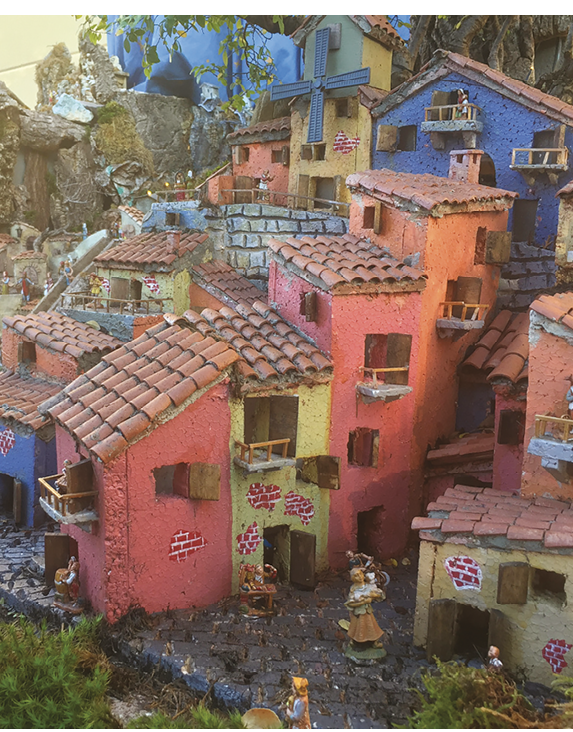Bologna is known as the “Learned” for its rich cultural heritage, the “Red” for its porticos and brick architecture, and the “Glutton” for its culinary tradition. But there’s a Christmas tradition that’s unknown even to some Bolognese: nativity scenes. This tradition’s ancient roots date to the 13th century, influenced by St. Francis of Assisi, who, in 1223, created the first living nativity scene in Greccio, Italy. The idea spread rapidly throughout Italy and became an integral part of Christmas culture in many communities, marking a transition from mere religious celebration to a cultural and social experience.
_-_BEIC_6333412.png)
During the Christmas period, Bologna’s squares are enlivened by markets offering local handicrafts and culinary delicacies, while nativity scenes are displayed in churches, homes, and exhibits, becoming the focus of events celebrating this art. Beyond religious symbols, Bolognese nativity scenes are an important expression of the city’s cultural heritage. Here, you can admire two types of nativity scenes: one representing the classic Nativity, and one based on folk tradition portraying scenes of everyday life, with typical characters such as peasants and artisans. The first type includes one of the city’s treasures: the nativity scene in St. Steven’s Basilica (known as the “Seven Churches” and considered one of the world’s oldest). Dating to the 13th century, it is an artistic masterpiece portraying the Nativity with detailed figures and evocative scenes. The representation of the Adoration of the Magi, dating to the Gothic era, was restored in 1983 after a period of deterioration. After further restoration in the early 2000s, the work, initially displayed in Bologna’s Pinacoteca (picture gallery), was returned permanently to St. Steven’s in 2007.
The creator of the statues is unknown, but in theory may be the Master of the Crucifix from 1291. The five statues, carved in linden and elm wood, show the Virgin and Child, St. Joseph, and the three Magi. It is significant that one of the Magi, on his knees and without a crown, symbolizes the decline of human kingliness compared to the divine.

In recent years, some artists and residents have begun experimenting with more modern forms of the nativity scene, integrating contemporary and innovative elements. One such example is the large nativity scene on Via Azzurra, set up by two residents in the garden of their home. From 1 December to 6 January, they embellish the scene with new statues and scenery, often made with recycled materials, narrating not only the Nativity but everyday life in Bologna as well. Every year, they reinterpret classic scenes, creating a meeting point between tradition and modernity. Their attention to detail and a welcoming atmosphere make this nativity scene a must for anyone who wants to feel the city’s Christmas spirit.
The variety of nativity scenes in Bologna enrich the holiday panorama and reflect the city’s lively and constantly evolving character. Every nativity scene tells a unique story, based on tradition but welcoming new experiences. This merger of past and present invites residents and visitors to immerse themselves in a lively culture, in which every detail pays homage to local history and to modern creativity.

.jpg)



.png)